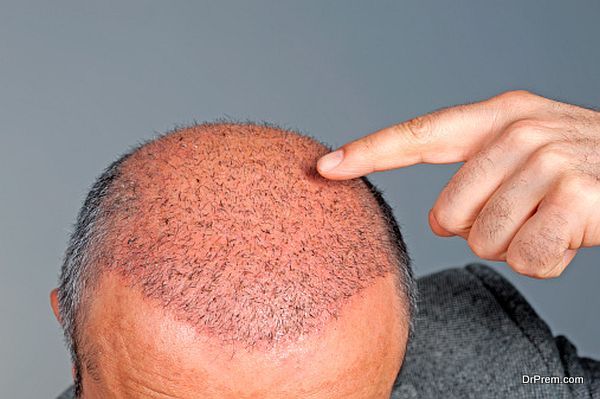Definition:
Hair transplantation is a surgical procedure performed to treat baldness or hair loss. The procedure involves removing a portion of skin containing hair follicles from one part of the patient’s body (donor site) and implanting it to the bald spot (recipient site).
Details of Procedure:
Hair transplantation is advised when patients have significant hair loss, thinning of hair or bald spots where hair growth has stopped completely (alopecia). Conditions in which hair stops growing include:
- Androgenic alopecia
- Male pattern alopecia
- Cicatricial alopecia
- Traumatic alopecia
- Traction alopecia
Facts and Figures:
- According to published data approximately 50,000 men receive hair transplants each year.
- Alopecia is so common that it has been accepted as normal phenomena in our society. It is estimated that in the United States 35,000,000 men and 21,000,000 women suffer from hair loss.
- It is estimated that 50% of all men are affected with male-pattern hair loss and 30-40% of all women are affected with female-pattern hair loss. The rate and extent of hair loss varies from person to person.
- Early hair transplantation was used to treat male pattern baldness in the past but modern hair transplant techniques began in Japan in the 1930s.
Advantages and Disadvantages:
Advantages:
- Successful hair transplantation gives the patient a more youthful appearance, which increases self-esteem and confidence.
- The transplanted hair will look and behave as a normal hair. Patients may continue their regular hair style and cut.
- Less recovery time required with latest hair transplant technologies and no need for hospitalization.
- Comparatively less painful procedure.
Disadvantages:
Hair transplantation does not stop balding; hair may continue to be lost around the transplanted area forming new bald patches that may require further surgery in the future.
Risks and Complications:
- Bleeding
- Infection
- Scarring at donor or recipient sites.
- Bald patches
- Numbness
- Poor hair growth
- Unnatural hair line
- Cyst formation
Pre-operative and Post-operative care:
Pre-operative preparation:
- Physical examination
- Blood and urinalysis
- Consultation with surgeon or doctor a week prior to procedure; doctor will prescribe a list of medicines to be taken and advise you on any medication you need to discontinue.
- Inform the surgeon about smoking and alcohol consumption patterns.
- Arrangement for help with driving and post surgery recovery period.
Post-operative care:
- After the transplantation procedure patient needs to wear a surgical dressing over the scalp for 1-2 days. Dressings can be discontinued and the patient can begin washing the hair after 72 hours.
- The transplanted hair will fall out within 2-3 weeks of the procedure and new hair growth will be noticed within 2-3 months post surgery. The growth stabilizes by the first year. According to some reports, more than 95% graft survival rate can be obtained, if surgery is performed by an experienced surgeon.
Do’s, Don’ts and Precautions:
- Do take medication as per surgeon’s instructions.
- Avoid strenuous activity the first few days after surgery.
- Don’t scrape off the scabs that form at the graft sites.






